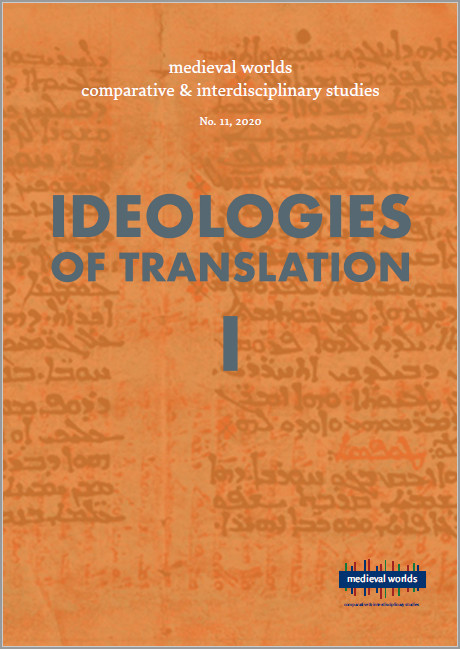|
 |
medieval worlds provides a forum for comparative, interdisciplinary and transcultural studies of the Middle Ages. Its aim is to overcome disciplinary boundaries, regional limits and national research traditions in Medieval Studies, to open up new spaces for discussion, and to help developing global perspectives. We focus on the period from c. 400 to 1500 CE but do not stick to rigid periodization.
medieval worlds is open to submissions of broadly comparative studies and matters of global interest, whether in single articles, companion papers, smaller clusters, or special issues on a subject of global/comparative history. We particularly invite studies of wide-ranging connectivity or comparison between different world regions.
Apart from research articles, medieval worlds publishes ongoing debates and project and conference reports on comparative medieval research.
Table of Contents
Ideologies of Translation, I
Instead of an Introduction: Medieval Europe Translated
Pavlína Rychterová
Technologies of Translation
The Byzantine Imperial Chancery and its Language Policy from Justin II to Leo III
(Sixth-Eighth Centuries): From Latin to Greek
Christian Gastgeber
Translation as Interpretation: Translating Galen’s Polysemous Term Physis into Arabic
Elvira Wakelnig
Between Languages, Genres and Cultures: Diego Collado’s Linguistic Works
Jan Odstrčilík
Politics of Translation
The Latin Talmud and the Extension of Papal Jurisdiction over Jews
Alexander Fidora
»For they did not change their language« (MekhY Pischa 5):
On the Early Medieval Literary Rehebraicisation of Jewish Culture
Constanza Cordoni
Cultures of Translation
The Tibetan Translation of the Indian Buddhist Epistemological Corpus
Pascale Hugon
Translation as Commentary in the Sanskrit-Old Javanese Didactic
and Religious Literature from Java and Bali
Andrea Acri and Thomas M. Hunter
Project Report
An Interim Report on the Editorial and Analytical Work of the AnonymClassic Project
Beatrice Gruendler, Jan J. van Ginkel, Rima Redwan, Khouloud Khalfallah, Isabel Toral, Johannes Stephan, Matthew L. Keegan, Theodore S. Beers, Mahmoud Kozae, Marwa M. Ahmed
|




 Home
Home Print
Print
 References
References
 Share
Share
